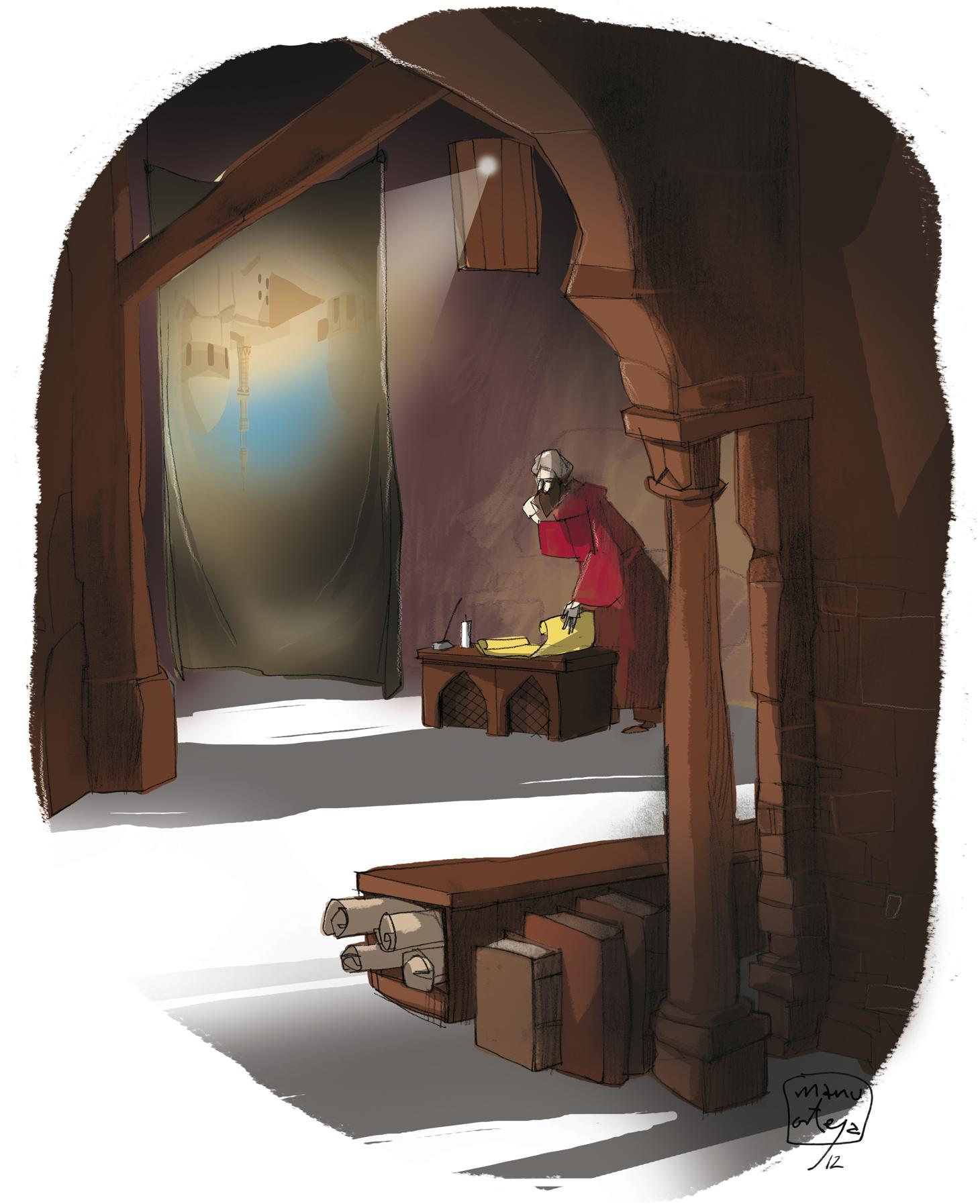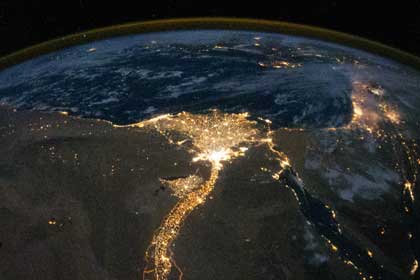Ibn al-Haytham, wise scientist
2012/12/01 Etxebeste Aduriz, Egoitz - Elhuyar Zientzia Iturria: Elhuyar aldizkaria

It was still dark when the mosque's call to prayer began. Ibn al-Haytham woke up in domestic solitude. The mosque beside him, but that day he was not going to go either; he heard from home the five calls of the day. So was the day and the day, every day the same, since he feigned madness. Perhaps he fled to a more bloody punishment, but was doomed to be a prisoner in his house.
If not so brave, when he said he could dominate the Nile River... He then lived in Basra (southern Iraq today), where al-Haytham was born in 965. At first he studied theology and law, but then decided to go for philosophy and science. "I studied in depth the beliefs of different sects, thought and theological systems, but I did not achieve anything that illuminates the path to reality," he wrote in his autobiography. When he knew the works of Aristotle, rather than the words of men, he decided that God wanted to investigate the works performed in the universe. He also absorbed works of Archimedes, Euclid and Ptolemy, making clear his true vocation.
Al-Haytham's wise fame was widespread when he said that the Nile River could be controlled. Nile overflowed every year, and al-Haytham calculated that dikes and canals could prevent flooding and reserve water for the drought season. He also arrived in Cairo, capital of the Phthmitar Caliphate, to the shores of Caliph Al-Hakim. And, of course, for the caliph the idea of controlling Nile according to his desire was very attractive.
Called by the Caliph, al-Haytham travels to Cairo. It was not a bad place for a wise man. There was the prestigious Al-Azhar University, which liked the caliphs and fostered science and knowledge. For example, he created the library Dar al-'ilm (The House of Knowledge), which became one of the most important in the world.
Kalifa named al-Haytham the head of a team of court engineers and the team embarked on the river in search of the right place to hold him. After several days, passing through Asua, on the roof of the desert, al-Haytham felt cold sweat. He saw it clear: they didn't work, it was impossible, Nile was too big, uncontrollable.
But how to tell the caliph that he failed? His cruelty was known. Al-Haytham once heard that he ordered all the dogs to be killed because the thieves bothered him; that he forced the population to sleep by day and to work by night; that he prohibited the women from going out into the street and making shoes for women to the shoemakers; that they cut the hands of the slaves of the pallet; and that he would murder visiras, doctors or other officials without reason, often with his hands. For fear of the caliph's reaction, the solution he found was to pretend madness. And they forced him to remain a prisoner in his house. So it was ten years until the caliph died in 1021. But he did not waste that time. He worked and wrote, among others, the Kitab al-Manazir treatise on a seven-volume optics.
"The ink of the scholars is more sacred than the blood of the martyrs," says the Quran, and al-Haytham shed many inks, both during those ten years and later. When Caliph died, he confessed the truth and continued teaching, translating Greek works and researching throughout his life.
He worked extensively on geometry and number theory, mechanics, astronomy, engineering and philosophy. But one of his great contributions was the Book of Optics. He showed that the light was traveling correctly and was the first to explain the basis of sight well. Through experiments with lenses and mirrors, he studied the reflection, dispersion and refraction of light and gave his mathematical explanations. He studied eclipses, shadows and rainbows. He explained that we see the light of twilight and dawn because sunlight refracts in the atmosphere, and that it occurs when the sun is 19 degrees above the horizon. Based on this refraction, he also calculated that the height of the atmosphere was about 100 km.
The work of al-Haytham, based on empiricism and proofs. He designed a series of devices and experiments to demonstrate the hypotheses extracted from his reading or observation. For example, studying how candlelight penetrated from a small hole in the wall into a dark room, he made great discoveries. For example, if I put several candles out, I observed that in the dark room there appeared so many other clear points, and that if I put some obstacle between a candle and the hole, the corresponding point disappeared. He measured that candles and dots in the dark room could be associated with straight lines passing through the hole.
In the same way it showed that the light emitted by a light source (sun or candle) is reflected in objects in all directions. And seeing that in the experiments of the dark room the lights of the different candles were not mixed when passing through the hole, he concluded that when the light reflected by the objects enters the eyes, a representation is made in the eye by points of what we have in front. In addition, he delved into the anatomy of the eye and, seeing the structure, proposed a function similar to that of the dark room.
Thus, al-Haytham showed that Euklides and Ptolemy were wrong and that we do not see it through the rays emitted by the eyes, as they said. And if those great scholars were wrong, perhaps many other accepted truths were wrong!
In fact, the Greeks tended to remain in mere theorization. Al-Haytham, however, saw clear the need for experimentation and demonstration of hypotheses, as well as the importance of being critical of what was given by the above: "The seeker of truth is not the one who explores the works of ancient scholars and, by virtue of their natural nature, trusts them, but suspects their faith in them (...) and resorts to arguments and evidence, and not to what people have said, since the person is full of imperfections and errors of all kinds. Thus, the man who analyzes the writings of scientists has the obligation to, if he wants to know the truth, make an enemy of everything he has read (...) and attack everywhere."

Gai honi buruzko eduki gehiago
Elhuyarrek garatutako teknologia






